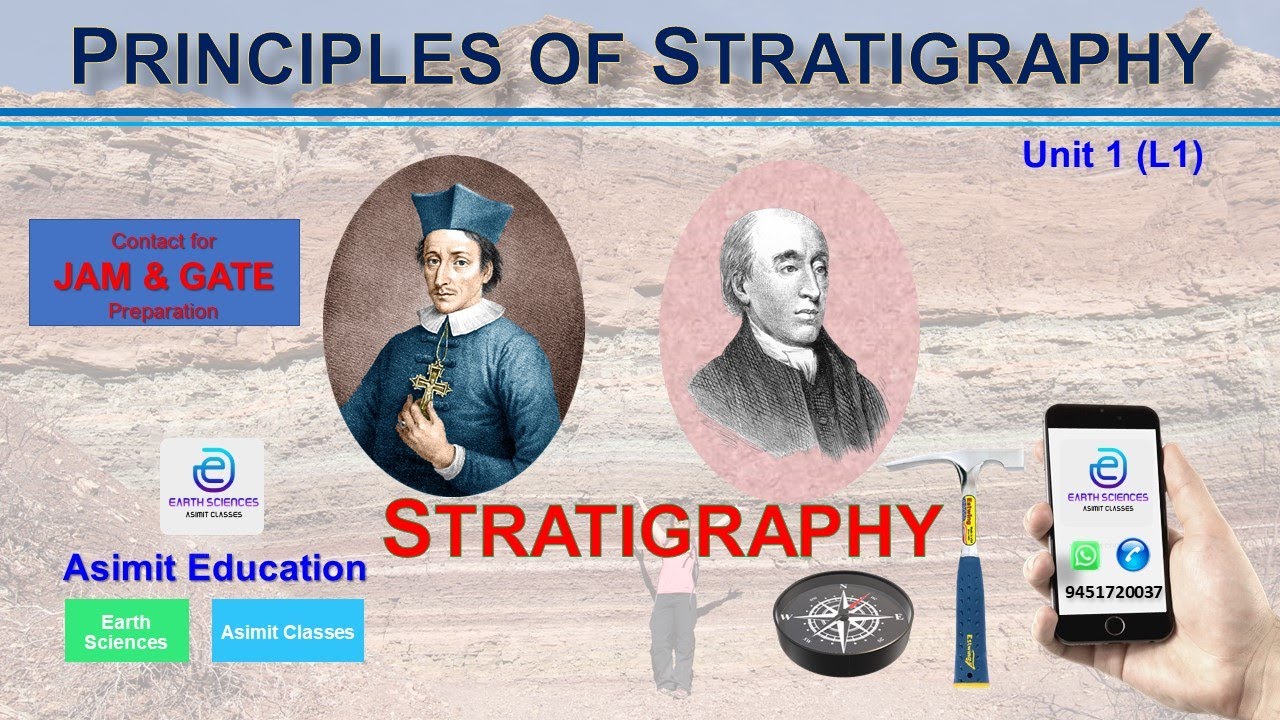Seismic Reflection Interpretation: 2-3 Seismic Stratigraphy
Summary
TLDRThis lecture on seismic interpretation covers essential concepts such as sequence stratigraphy, seismic facies, and grid picking. The speaker introduces the idea of spectral decomposition, explaining how frequency breakdown can aid interpretation. Key topics include the importance of choosing the right grid spacing for efficient yet detailed data analysis, and differentiating between traditional facies and seismic facies, which focus on seismic attributes like amplitude, frequency, and continuity. The goal is to help students develop a robust interpretation framework for seismic data analysis, using various techniques to enhance understanding.
Takeaways
- 😀 Seismic stratigraphy and sequence stratigraphy are essential tools for interpreting depositional systems and understanding geological history.
- 😀 Sequence boundaries, system tracks, and stratal terminations help define different seismic facies and depositional features.
- 😀 Understanding the frequency content in seismic data (low vs. high frequencies) is crucial for refining seismic interpretations.
- 😀 Spectral decomposition allows the separation of seismic data into different frequency components to enhance interpretation.
- 😀 Different grid picking techniques (e.g., 2x2 vs. 9x9) balance the need for detail with the efficiency of the interpretation process.
- 😀 Seismic facies, unlike lithofacies or biofacies, are characterized by the continuity, amplitude, frequency, and contact patterns of seismic reflectors.
- 😀 The process of spectral decomposition is akin to isolating low and high frequencies to better visualize and interpret seismic data.
- 😀 Seismic interpretations should always consider the purpose behind the analysis, ensuring it aligns with project goals or objectives.
- 😀 Efficient seismic interpretation involves combining multiple techniques and understanding the limitations of frequency content.
- 😀 Resources such as the SCM strata website can aid in learning more about sequence stratigraphy and seismic interpretation techniques.
Q & A
What is the primary purpose of spectral decomposition in seismic interpretation?
-Spectral decomposition is used to break down seismic data into different frequency components (low and high frequencies). This helps in better imaging and interpreting seismic features, which is crucial for identifying subsurface structures.
How does frequency content impact seismic interpretation?
-Frequency content is important because it affects the clarity and resolution of seismic features. Low frequencies help in imaging larger structures, while high frequencies provide finer details. Understanding the limitations and significance of each frequency type is vital for accurate interpretation.
What is grid picking in seismic interpretation?
-Grid picking refers to selecting specific grid spacings in seismic data for interpretation. It involves choosing how much detail to pick, balancing between efficiency and the level of detail needed. Different grid sizes, such as 2x2 or 9x9, provide varying levels of clarity in feature identification.
Why is the balance between detail and efficiency important when grid picking?
-Balancing detail and efficiency ensures that seismic interpretation is both accurate and practical. Too much detail may result in inefficiency and excessive computational effort, while too little detail might lead to missing important features or misinterpretations.
What are seismic faces, and how do they differ from other types of faces like lithofacies or biofacies?
-Seismic faces refer to the characteristics of seismic reflectors, including continuity, amplitude, frequency, and contact patterns. Unlike lithofacies (which focus on mineral content and grain size) or biofacies (which focus on fossil content), seismic faces describe features observable through seismic data.
What is the significance of understanding sequence stratigraphy and seismic stratigraphy?
-Sequence stratigraphy and seismic stratigraphy provide a framework for understanding depositional systems. They help interpret the arrangement and distribution of geological layers and features, which are essential for predicting subsurface conditions in various applications like oil and gas exploration.
What role does the SCM Strata website play in seismic interpretation?
-The SCM Strata website is a valuable resource for understanding key elements of seismic interpretation. It provides information on important concepts like sequence boundaries, system tracks, and different stratal terminations, helping interpreters apply these concepts accurately.
How does spectral decomposition enhance seismic interpretation?
-Spectral decomposition enhances seismic interpretation by allowing interpreters to isolate and analyze specific frequency components of the seismic data. This enables clearer imaging of geological features, improving the overall accuracy of subsurface interpretation.
What are stratal terminations, and why are they important in seismic stratigraphy?
-Stratal terminations are the boundaries or edges of stratigraphic layers. They are important because they provide insights into the depositional history and help identify key features like unconformities or changes in sedimentation patterns, crucial for understanding geological processes.
What are some key challenges in seismic interpretation that the lecture addresses?
-Key challenges in seismic interpretation include choosing the right grid spacing for picking, understanding the limitations of frequency content, and properly using terminology like seismic faces to describe geological features. The lecture emphasizes the importance of balancing detail, efficiency, and purpose in interpretation.
Outlines

هذا القسم متوفر فقط للمشتركين. يرجى الترقية للوصول إلى هذه الميزة.
قم بالترقية الآنMindmap

هذا القسم متوفر فقط للمشتركين. يرجى الترقية للوصول إلى هذه الميزة.
قم بالترقية الآنKeywords

هذا القسم متوفر فقط للمشتركين. يرجى الترقية للوصول إلى هذه الميزة.
قم بالترقية الآنHighlights

هذا القسم متوفر فقط للمشتركين. يرجى الترقية للوصول إلى هذه الميزة.
قم بالترقية الآنTranscripts

هذا القسم متوفر فقط للمشتركين. يرجى الترقية للوصول إلى هذه الميزة.
قم بالترقية الآنتصفح المزيد من مقاطع الفيديو ذات الصلة

Seismic Reflection Interpretation: 2-4 Seismic Facies

Seismic Reflection Interpretation: 2-1 Structural Interpretation

Principles of Stratigraphy (STRATIGRAPHY- U1 L1) #STRATIGRAPHY #GATE #JAM #CSIR #NET #GEOLOGY

Seismic Reflection Interpretation: 1-6 Processing Basics

Focal Mechanisms Explained: What are those “beach balls”? (Educational)

OpenQuake - Scenario Damage and Loss: Theoretical Background
5.0 / 5 (0 votes)
